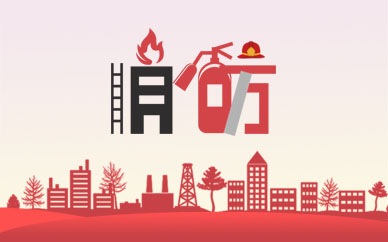TF081-The Professionalization of Painting in Europe|世界观察
 (资料图片仅供参考)
(资料图片仅供参考)
The Professionalization of Painting in Europe
Before the eleventh century most painters in Europe were monks (members of a religious group that lives in seclusion) and their work was exclusively religious. Such artists worked in a variety of art forms, including metalwork and manuscript illumination(the art of illustrating handwritten books), and they did not sign their work, as art was considered an opportunity for religious meditation not self-advancement. Between the eleventh and the fourteenth centuries, however, painting began being practiced by lay professionals, who had no connection to religious institutions. Inevitably, this had consequences both for working practices and for the art that was produced. These new painters followed a trade like any other. Like the woodworker, the potter, the baker and the weaver, the lay painter offered his technical proficiency for fee. He was by no means above asking the baker for use of his ovens to make charcoal, employed as a black pigment. Nor would the artist sneer at the cook, with whom he had many skills in common.
One of the consequences of this transition from monk to artisan was increasing specialization. Painters were painters, not to be confused with illuminators, dyers, or workers in wood and metal. Such distinctions were rigidly enforced by the guilds-powerful associations of workers within specific trades-that developed to safeguard the employment of tradespeople against competition and economic uncertainty, so that it would have been unthinkable for a painter to be called in to illuminate a book page. There were even fine distinctions drawn among painters. In fifteenth-century Spain one could find cialists in altarpiece painting (the painting of images for placement behind the altar of a church). fabric painting, and interior decorating. Associated with these divisions was a hierarchy of trades in which status tended to reflect the value of the materials. Goldsmiths were the most prestigious and powerful artisans, painters more humble, and woodworkers still more so. Guild restrictions prohibited the use of the most valuable pigments (coloring substances), such as ultramarine, for lowly purposes such as the painting of playing cards, carts, or parrot perches. Thus these valuable pigments played role in establishing the social standing of painters: it was in their interests to use fine materials.
Yet the art of painting was still regarded as a mechanical process. There was good and bad, to be sure, but the task of the painter was to meet the specifications of a contract, not to give free expression to artistic inspiration. It was the employer-the patron-who made the decisions. Initially, the patrons of lay painters, when not church-affiliated, tended to be royal or aristocratic, and the painter could find himself affiliated to a court. But as a prosperous middle class emerged during the fourteenth and later centuries, the base of patronage broadened, and artists could find commissions (orders for artworks)among merchants.
Membership in a guild was attained by apprenticeship. Aspiring painters would serve a training period of typically between four and eight years in a workshop operated by a master craftsman, beginning as all apprentices do with the most menial of jobs, such as grinding pigments and making glue. Pigment grinding was a particularly arduous and time-consuming job, and painters might need to allow several days for this alone in their scheduling for a commission. To qualify as”master painter”ready to accept contracts, an apprentice would present”master piece”to the guild for approval.Strange, then, that this term has come to refer to an artist’s most accomplished piece of work rather than his or her first attempt to gain recognition.
A workshop undertook a commission as group, much as a band of builders would (and still does) perform a job collectively. The master was responsible for the overall execution of the work, but the application of paint to surface was as much, if not more, the responsibility of his apprentices. Thus the signatures that appear on fourteenth-and fifteenth-century art are simply trade stamps, denoting the name of the workshop’s master. This traditional training placed little value on personal talent or inspiration: a person became a painter simply through hard work, dedication, and adherence to the master’s demands. Skill was the product of diligence.
1.Before the eleventh century most painters in Europe were monks (members of a religious group that lives in seclusion) and their work was exclusively religious. Such artists worked in a variety of art forms, including metalwork and manuscript illumination(the art of illustrating handwritten books), and they did not sign their work, as art was considered an opportunity for religious meditation not self-advancement. Between the eleventh and the fourteenth centuries, however, painting began being practiced by lay professionals, who had no connection to religious institutions. Inevitably, this had consequences both for working practices and for the art that was produced. These new painters followed a trade like any other. Like the woodworker, the potter, the baker and the weaver, the lay painter offered his technical proficiency for fee. He was by no means above asking the baker for use of his ovens to make charcoal, employed as a black pigment. Nor would the artist sneer at the cook, with whom he had many skills in common.
X 关闭
-
 TF081-The Professionalization of Painting in Europe|世界观察
TF081-The Professionalization of Painting in Europe|世界观察 -
 每日快报!圣人不死大盗不止的意思是什么_圣人不死大盗不止到底是什么意思
每日快报!圣人不死大盗不止的意思是什么_圣人不死大盗不止到底是什么意思 -
 今日热闻!无锡旅游攻略住哪里好_无锡旅游攻略
今日热闻!无锡旅游攻略住哪里好_无锡旅游攻略 -
 渤海银行长沙分行回应挪用商品房预售资金:系株洲分行恒大地产对公项目 世界新动态
渤海银行长沙分行回应挪用商品房预售资金:系株洲分行恒大地产对公项目 世界新动态 -
 360浏览器卡顿严重解决办法_360浏览器卡顿|环球时讯
360浏览器卡顿严重解决办法_360浏览器卡顿|环球时讯 -
 苹果8p怎么截图的快捷键设置(苹果8p怎么截图的快捷键)-天天新要闻
苹果8p怎么截图的快捷键设置(苹果8p怎么截图的快捷键)-天天新要闻 -
 世界百事通!金价重返历史高位观察:还会有怎样的表现?
世界百事通!金价重返历史高位观察:还会有怎样的表现? -
 湖北14所合同节水管理高校一年节水5100余万元 最新快讯
湖北14所合同节水管理高校一年节水5100余万元 最新快讯 -
 2023敦煌网集团商家大会在深圳举行 推出星云计划3年实现百亿美元交易
2023敦煌网集团商家大会在深圳举行 推出星云计划3年实现百亿美元交易 -
 梅花生物:3月28日融券卖出7.34万股,融资融券余额12.14亿元
梅花生物:3月28日融券卖出7.34万股,融资融券余额12.14亿元
- TF081-The Professionalization of Painting in Europe|世界观察
- 每日快报!圣人不死大盗不止的意思是什么_圣人不死大盗不止到底是什么意思
- 今日热闻!无锡旅游攻略住哪里好_无锡旅游攻略
- 渤海银行长沙分行回应挪用商品房预售资金:系株洲分行恒大地产对公项目 世界新动态
- 360浏览器卡顿严重解决办法_360浏览器卡顿|环球时讯
- 苹果8p怎么截图的快捷键设置(苹果8p怎么截图的快捷键)-天天新要闻
- 世界百事通!金价重返历史高位观察:还会有怎样的表现?
- 湖北14所合同节水管理高校一年节水5100余万元 最新快讯
- 2023敦煌网集团商家大会在深圳举行 推出星云计划3年实现百亿美元交易
- 梅花生物:3月28日融券卖出7.34万股,融资融券余额12.14亿元
- 一次文献二次文献三次文献三者之间的关系(一次文献) 环球百事通
- 昊海生物科技(06826.HK):3月28日南向资金减持1.01万股|速看
- 【全球报资讯】立华股份(300761):关于特定股东股份减持计划完成的公告
- 即时焦点:和平精英什么枪械可以升级 和平精英升级枪械怎样划算
- 焦点观察:美国小学枪击案令人心碎 两个细节引人深思
- 国家发展改革委主要负责同志会见美国苹果公司首席执行官库克一行 当前播报
- 全球观速讯丨50所!河南省专升本院校公布招生计划、专业、学费
- 世纪天鸿(300654)3月28日主力资金净买入2697.70万元 世界球精选
- 世界短讯!农村自建房无证,一律拆除?中央明确:加速房地一体确权颁证
- 保温杯能不能泡茶 保温杯能不能泡茶叶
- 环球动态:361°签约黎伊扬为新晋篮球品类代言人,用热爱致敬草根篮球梦想
- 生态环境部:空气质量改善形势较为严峻,大气污染防治仍艰巨 ;
- 世界热资讯!新华全媒+|卫星视角洞见海南自贸港蓬勃兴起
- 消息称iPhone 15将在更多市场取消支持实体SIM卡_当前通讯
- 图片报:多特想1500万欧年薪续约贝林厄姆 新约设1.5亿欧的解约金_每日速递
- 世界快讯:个人人民币1年期整存整取存款是什么意思
- 押金收据怎么写才算正式_押金收据 全球快播
- 世界讯息:余额宝是什么基金_余额宝是什么
- pmp资格证书报考条件_pmp资格证书报考条件介绍
- 做大轻资本业务、大量赎回的时期已经过去……招行业绩发布会透露这些重要信息
- 讯息:我爱我家为昆明商业公司3700万元授信额度提供担保
- 古井贡酒:上半年净利润同比增长39%
- 希腊媒体:讲述成长故事,伊布传记电影将于3月30日上映
- 安图县气象局发布森林火险气象蓝色预警【IV级/一般】【2023-03-27】 每日快讯
- 遇到套路贷,怎样联系机构退贷款|世界快看
- 环球热资讯!新陆精密:与“果链”相依相偎严重,IPO备受质疑何去何从?
- 当前动态:中秋节走心文案四字_中秋节走心文案
- 当前要闻:新设计+新动力+新系统 领克08正式发布
- 车上的src是什么功能_车上的SRC是什么意思_环球即时
- 百亚股份:公司外围省份亏损幅度在逐渐收窄 预计部分省份市场2023年有望实现盈亏平衡
- 环球速读:3-2绝杀日本伊藤美诚,3-0夺世乒赛选拔赛开门红,钱天一状态火爆
- CBA全明星太不专业!转播方漏3大活动,无视郭艾伦+忽略女篮巨星
- 国家队历史出场榜:C罗197场居首,拉莫斯第6&布冯第10
- 游戏板块近期持续回暖,主题ETF领涨|天天信息
- 合营企业用权益法还是成本法_合营企业
- 保姆级 Prometheus PromQL 讲解与实战操作_快看点
- 洪都拉斯宣布与台湾“断交”
- 信息:两打两控是指什么
- 环球资讯:家用冰箱买多少升合适_家用冰箱
- 跨栏跑全程技术分为哪四个部分_跨栏跑的介绍
- 世界热资讯!平均数公式excel怎么用(平均数公式)
- 金边日环食时间 天天观点
- 美好恋爱模拟什么时候出 公测上线时间预告
- 兔年大年初一总票房突破13亿-天天观热点
- 让服务管理张弛有度的妙招是...
- 手工抽纸盒怎么做
- 明星的素颜你们见过吗?妆前妆后差距大!化妆真的可以提升颜值吗|每日热议
- 凤凰台街道省检察院社区开展无主管楼院卫生清理整治工作 天天短讯
- 速讯:深圳出台行动方案推进直播电商高质量发展
- 河北省开展2023年度“三三三人才工程”资助项目申报工作
- 今年三伏天长达40天 2022年三伏时间具体什么时候开始结束
- excel表格分页预览怎么增加页_excel分页预览怎么多加一页-每日热闻
- 世界速看:黄鼠狼的天敌_黄鼠狼的天敌是什么
- 上百份简历录用率为0?网友:我愿意倒贴上这个班!
- 【新视野】央视记者专访丨美军医:伊拉克战争给伊人民造成沉重灾难
- 农历二月十四是什么节日_即时焦点
- 中期协就期货公司资产管理业务准入过渡期安排征求意见|焦点报道
- 山西累计建成5G基站达6.9万个
- 美联储刚加息,英国央行就宣布加息25个基点,背后本质是什么? 当前头条
- 房屋大修基金(证券从业资格考成绩) 环球信息
- Solidigm出席中国闪存市场峰会, 聚焦固态存储新范式,共绘行业发展新未来
- 天天视点!野村:维持港交所(00388)“买入”评级 目标价降至415.26港元
- 【环球新视野】广东省博物馆旅游攻略
- 贵安旅游“花样文章”渐入佳境_环球热讯
- 当前关注:海通国际发布劲仔食品研报,大包装升级+新品发力,22年全年收入利润高成长
- 全球快播:多地已取消强制接种疫苗 不得强制要求全员接种疫苗
- 七雄争霸地图_七雄争霸sf 精彩看点
- 山东高速物流品牌介绍_山东高速物流
- 中国位于北半球还是南半球 天天热议
- 临沂市职业经理人协会举办“经营逻辑与老板如何提升中层”培训会
- 每日热文:昭平县气象台更新雷电黄色预警信号【III级/较重】【2023-03-23】
- 扣12分重考科目一流程要交多少钱_扣12分重考科目一流程
- 当前速讯:大方县气象台发布雷电黄色预警信号【Ⅲ/较重】
- 会元和状元有什么区别_会元 今日热闻
- 吴江化纤纺织企业考察团到邓州市考察并签约
- 环球滚动:白宝山电视剧剧情
- 古瑞瓦特递表港交所,描绘“好赛道+好赛手”框架下的标准画像 全球快消息
- 海南:今年计划筹集保障性租赁住房3455套(间)
- 当前简讯:安氏绒茧蜂
- 北方多地迎沙尘!长春直接下“泥雨”:汽车变泥车
- 新疆众和:3月22日融资买入2543万元,融资融券余额5.81亿元
- 全球速看:魔兽世界银色复仇者任务在哪接
- 热资讯!华胜天成(600410):3月22日北向资金增持130.37万股
- “宝岛情缘——台湾知名画家邀请展”在港开幕_今日热搜
- 热点聚焦:中科磁业:公司已全面掌握了高性能稀土永磁材料的制备和大规模生产技术
- 每日看点!人和路街道华府社区开展燃气安全宣传活动
- 环球看热讯:英雄联盟辅助助手叫t什么,英雄联盟辅助什么意思
- 八大板块优惠不断 2023健康惠民节开启惠民新征程-全球热文
- 一个庚日是几天_庚日如何计算-天天信息
- 【环球新要闻】为何今年北方沙尘天气如此频繁?具体详细内容是什么
Copyright © 2015-2023 今日商报网版权所有 备案号:沪ICP备2023005074号-40 联系邮箱:5 85 59 73 @qq.com

